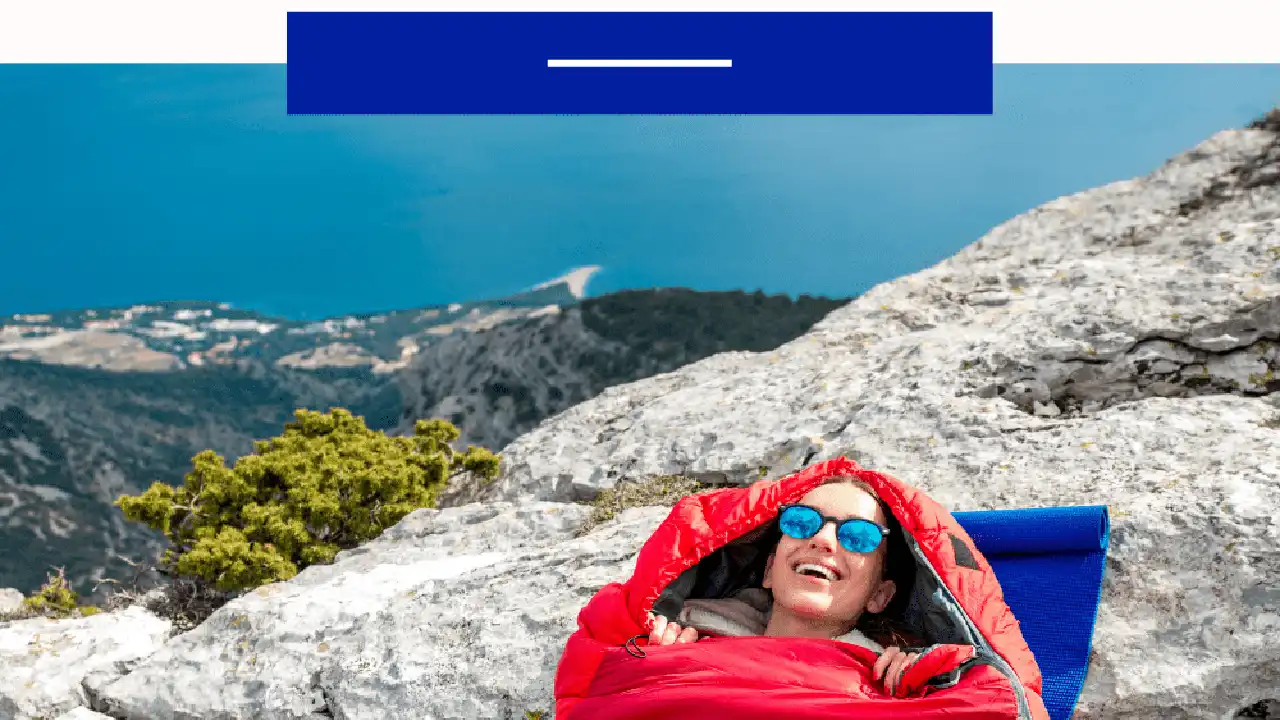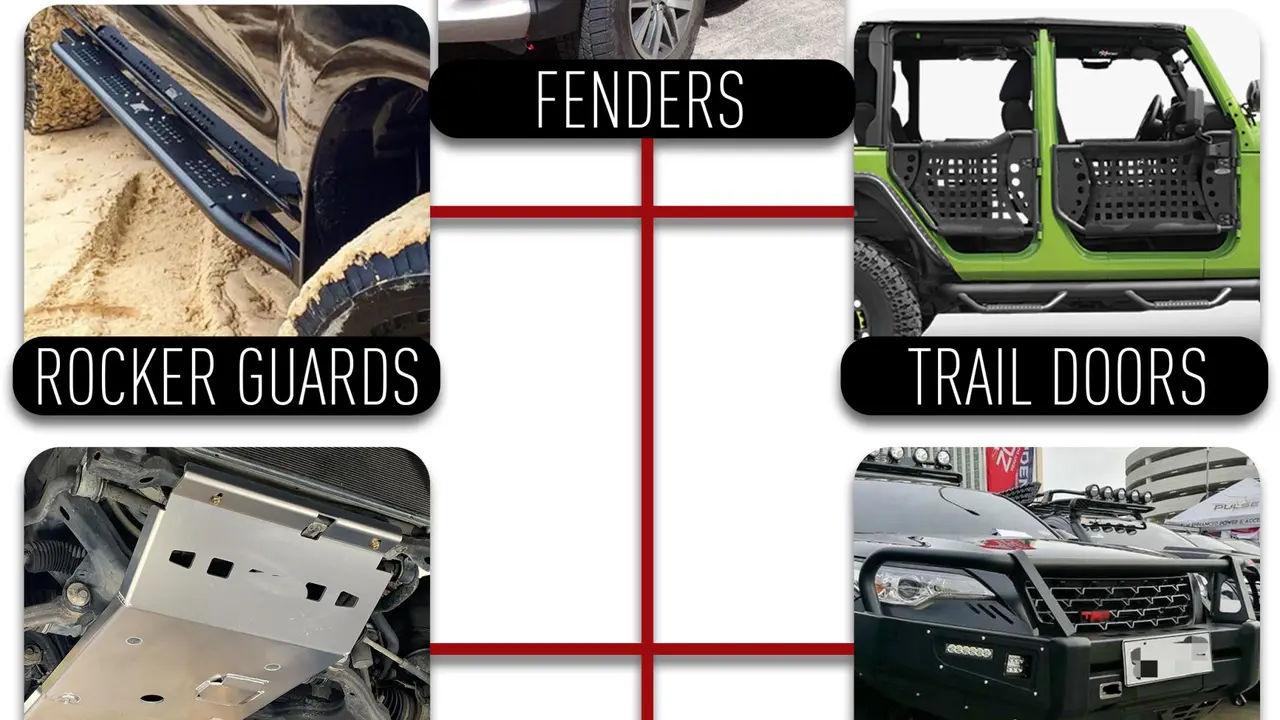How to Choose the Right Sleeping Bag for Overlanding

Selecting the correct sleeping bag is crucial for a comfortable night's sleep. Learn how to choose the right sleeping bag for your overlanding adventures. Improve your comfort in various weather conditions. Customize your overlanding experience with our expert guidance.
Understanding Sleeping Bag Temperature Ratings for Overlanding Comfort
Okay, so you’re planning an epic overlanding trip. You've got your rig kitted out, your route mapped, and your adventure spirit fired up. But are you sleeping comfortably? Choosing the right sleeping bag is *not* an afterthought. It's essential for recovering from long days on the trail and staying warm (or cool) through unpredictable weather. The key? Understanding temperature ratings.
Sleeping bags come with temperature ratings that indicate the lowest temperature at which the bag will keep a "standard" sleeper warm. These ratings are usually based on standardized tests, but it's *super* important to remember that these are guidelines, not guarantees. Your personal metabolism, clothing, and shelter all play a role. If you tend to sleep cold, err on the side of a warmer bag.
Here's a breakdown of common temperature ratings and their ideal uses:
- 20°F to 30°F (-7°C to -1°C): Great for three-season camping and overlanding in moderate climates. These bags offer a good balance of warmth and packability.
- 0°F to 20°F (-18°C to -7°C): Ideal for colder conditions and winter camping. These bags are bulkier but provide crucial warmth in freezing temperatures.
- 30°F and Above (-1°C and Above): Perfect for summer camping and warm-weather overlanding. These bags are lightweight and packable, prioritizing breathability over extreme warmth.
Pro Tip: Don't just rely on the temperature rating. Consider the *comfort* rating. This is often a more realistic assessment of the bag's warmth for the average sleeper. Look for this information on the manufacturer's website or product description.
Choosing the Right Sleeping Bag Fill: Down vs Synthetic for Overlanding Expeditions
The fill material of your sleeping bag significantly impacts its warmth, weight, packability, and price. The two main contenders are down and synthetic.
Down Sleeping Bags: Lightweight Warmth for Serious Overlanders
Down is the fluffy undercoating of ducks and geese. It's incredibly lightweight and provides exceptional warmth for its weight. Down sleeping bags are highly compressible, making them ideal for saving space in your overlanding rig. However, down loses its insulating properties when wet, so it's crucial to keep it dry. Down bags also tend to be more expensive than synthetic options.
Pros of Down Sleeping Bags:
- Excellent warmth-to-weight ratio
- Highly compressible
- Long-lasting with proper care
Cons of Down Sleeping Bags:
- Loses insulation when wet
- More expensive
- Requires more care and cleaning
Synthetic Sleeping Bags: Reliable Performance in All Conditions for Overlanding
Synthetic fills are made from polyester fibers. They are less expensive than down and retain their insulating properties even when wet. Synthetic sleeping bags are also easier to clean and care for. However, they are generally heavier and bulkier than down bags and don't compress as well.
Pros of Synthetic Sleeping Bags:
- Retains insulation when wet
- More affordable
- Easier to clean and care for
Cons of Synthetic Sleeping Bags:
- Heavier and bulkier than down
- Lower warmth-to-weight ratio
- Doesn't compress as well
Which is Right for You? If you prioritize weight and packability and are meticulous about keeping your gear dry, down is a great choice. If you anticipate wet conditions or are on a budget, synthetic is a more practical option.
Sleeping Bag Shape and Size Considerations for Overlanding Comfort and Mobility
The shape and size of your sleeping bag affect its warmth, comfort, and packability. Common shapes include:
- Mummy Bags: These bags are tapered from the shoulders to the feet, maximizing warmth and minimizing weight. They are ideal for cold-weather camping but can feel restrictive for some sleepers.
- Rectangular Bags: These bags offer the most room to move around but are less thermally efficient. They are best suited for warm-weather camping and those who prefer a more spacious sleeping experience.
- Semi-Rectangular (Modified Mummy) Bags: A compromise between mummy and rectangular bags, offering a good balance of warmth and comfort.
Size Matters! Choose a sleeping bag that fits your height. Too much extra space will create cold spots, while a bag that's too short will be uncomfortable.
Essential Sleeping Bag Features for Overlanding Adventures
Beyond fill and shape, several other features can enhance your sleeping bag's performance and comfort:
- Hood: A hood provides extra warmth for your head and neck, especially in cold conditions.
- Draft Collar: A draft collar seals around your neck to prevent warm air from escaping.
- Zipper Baffle: A baffle along the zipper prevents cold air from seeping in.
- Internal Pockets: Handy for storing small items like your phone or headlamp.
- Water-Resistant Shell: A DWR (durable water repellent) finish on the outer shell helps protect the bag from moisture.
Top Sleeping Bag Recommendations for Overlanding in 2024: Reviews and Comparisons
Alright, let's get down to brass tacks. Here are a few sleeping bag recommendations, covering different budgets and needs:
Budget-Friendly Overlanding Sleeping Bag Option: Kelty Galactic 30 Degree Sleeping Bag
Description: The Kelty Galactic 30 is a solid synthetic option for budget-conscious overlanders. It offers decent warmth for its price point and is easy to care for.
Use Case: Spring and fall camping in moderate climates. Good for beginners who are just getting into overlanding.
Pros: Affordable, durable, easy to clean, retains warmth when wet.
Cons: Bulkier and heavier than down, not ideal for very cold temperatures.
Price: Around $80 - $100.
Mid-Range Overlanding Sleeping Bag Option: Marmot Trestles 15 Degree Sleeping Bag
Description: The Marmot Trestles 15 is a step up in terms of warmth and features. It's still synthetic, but uses a higher-quality fill for better performance.
Use Case: Three-season camping and overlanding in a variety of conditions. A good all-around choice.
Pros: Good warmth-to-weight ratio for a synthetic bag, durable, comfortable.
Cons: Still bulkier than down, not as compressible.
Price: Around $150 - $180.
Premium Overlanding Sleeping Bag Option: Feathered Friends Flicker UL 20 Quilt Sleeping Bag
Description: The Feathered Friends Flicker UL 20 is a top-of-the-line down quilt that offers exceptional warmth and packability. It's an investment, but worth it for serious overlanders.
Use Case: Backpacking, overlanding, and any activity where weight and space are critical. Ideal for cold-weather adventures.
Pros: Extremely lightweight and compressible, excellent warmth, high-quality down.
Cons: Expensive, requires more care, loses insulation when wet.
Price: Around $450 - $550.
Comparison Table:
| Sleeping Bag | Fill Type | Temperature Rating | Price | Pros | Cons |
|---|---|---|---|---|---|
| Kelty Galactic 30 | Synthetic | 30°F | $80 - $100 | Affordable, durable, easy to clean | Bulky, not for very cold temps |
| Marmot Trestles 15 | Synthetic | 15°F | $150 - $180 | Good warmth-to-weight, comfortable | Still bulky, not as compressible |
| Feathered Friends Flicker UL 20 | Down | 20°F | $450 - $550 | Lightweight, compressible, warm | Expensive, requires more care |
Don't Forget the Sleeping Pad for Overlanding Comfort and Insulation
Your sleeping bag is only half the equation. A good sleeping pad provides insulation from the cold ground and adds cushioning for a more comfortable sleep. Consider the R-value of the pad, which indicates its insulation level. Higher R-values are better for colder conditions.
Caring for Your Sleeping Bag: Tips for Longevity on the Overlanding Trail
Proper care will extend the life of your sleeping bag. Here are a few tips:
- Store it Loosely: Don't store your sleeping bag compressed for long periods. Use a large storage sack or hang it up.
- Clean it Regularly: Follow the manufacturer's instructions for washing your sleeping bag. Use a down-specific detergent for down bags.
- Air it Out: Air out your sleeping bag after each trip to prevent moisture buildup.
- Use a Liner: A sleeping bag liner helps keep your bag clean and adds a layer of warmth.
So, there you have it! Choosing the right sleeping bag for overlanding involves considering temperature ratings, fill type, shape, features, and your personal preferences. Do your research, read reviews, and don't be afraid to invest in a quality bag that will keep you comfortable and well-rested on your adventures. Happy trails (and sweet dreams)!
:max_bytes(150000):strip_icc()/277019-baked-pork-chops-with-cream-of-mushroom-soup-DDMFS-beauty-4x3-BG-7505-5762b731cf30447d9cbbbbbf387beafa.jpg)






